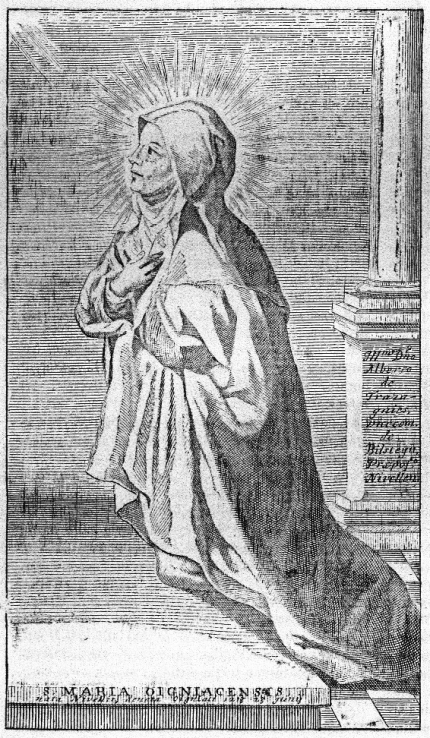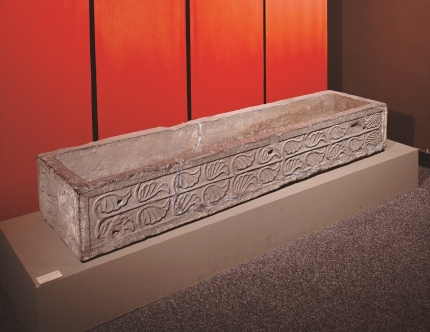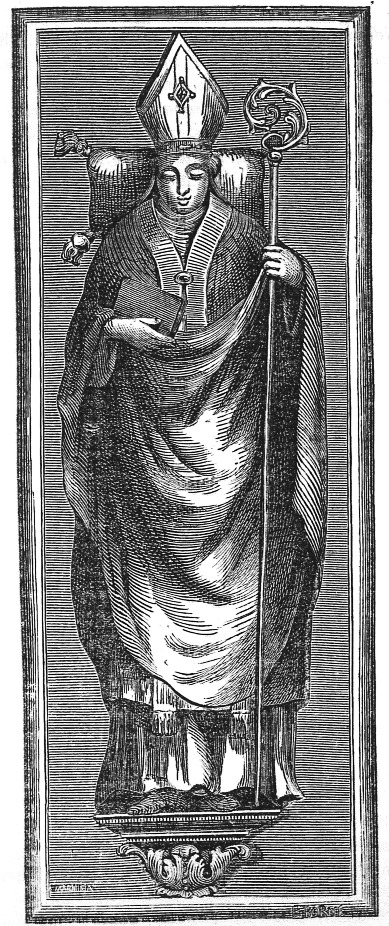The inspiration and the patron
In 1207, Marie, a young woman from Nivelles established a beguinage close to the Priory of Oignies. Over the years, Marie visited the beguinage in search of calm after having lived in a leper-house with her husband for many years. Having shared her life with the sick and notable for her intense spiritual life, Marie had become something of a celebrity whom many people came to listen to and consult. So when she went to live in the beguinage, it did not go unnoticed.
In the following year, Jacques de Vitry, a theologian born in Reims, went to meet Marie. Struck by the mystical personality of the young woman, he decided to live nearby and he became her confessor. It was Marie who persuaded him to join the community of Oignies. Having acceded to the priesthood, he was still living in Oignies at the time of Marie’s death in 1213 following a long illness. Three years later, Jacque de Vitry published the Vie de la bienheureuse Marie d’Oignies (The Life of the Blessed Marie d’Oignies), a work that definitively confirmed the cult dedicated to Marie. It was not long before pilgrims began to set out on the road to the Priory of Oignies where the sarcophagus containing the remains of Marie was placed.
Although Jacques de Vitry was to leave the community at Oignies to assume more prestigious functions, he did not abandon the priory.
Marie d'Oignies, as represented on a 17th century engraving.
Extract from B(eata) Maria Oigniacensi in Namurcensi Belgii dioecesi. Comentarius pravius, in Acta Sanctorum, june, plate.5, Paris-Rome,1867, p.544a.
Taken from a religious image designed to favour the cult of the Blessed Marie d’Oignies (or Marie de Nivelles), Marie is represented praying, facing the divine light.
Mosan art, Sarcophagus of Marie d’Oignies, beginning of the 13th Century (?), limestone, 30 x 203 x 52 cm.
Namur, Musée des Arts anciens du Namurois, Coll. Société archéologique de Namur, inv.nr.22.
The Mosan style sarcophagus of Marie d’Oignies is relatively sober in its execution with only plant motifs for decoration. It was commissioned by Jacques de Vitry. The body of Marie, who had died in June 1213, was laid to rest in it in 1226 or 1228.
Marminia and E. Borne, Jacques de Vitry on his deathbed, engraving.
Extract of De B(eatae) Maria Oigniacensi in Namurcensi Belgii dioecesi. Appendix in Acta Sanctorum, june, plate 5, Paris-Rome, 1867, p.582b.
In this engraving, Jacques de Vitry, purveyor of the Treasure of Oignies, is represented on his deathbed, dressed in his priestly clothes.






